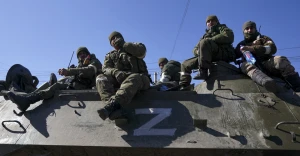
Ukrainian strike on Afipsky oil refinery highlights gaps in Russia’s air defense
Ukraine's Defense Forces successfully targeted Russia's strategically significant Afipsky oil refinery, despite its close proximity to advanced air defense systems, exposing gaps in Russian defense capabilities
Defense Express reports the information.
On the night of February 10, Ukraine's Defense Forces executed another successful long-range strike on Russian territory. The confirmed targets were the Afipsky oil refinery in the Krasnodar region and other facilities in Krasnodar.
The strike on the Afipsky refinery is particularly noteworthy due to its location—practically "behind the fence" of the 90th Anti-Aircraft Missile Brigade of the Russian 49th Combined Arms Army. This phrase is not a mere metaphor; the refinery and the brigade’s base are in close proximity.
It is acknowledged that the 90th Anti-Aircraft Missile Brigade is armed with Buk-M2 surface-to-air missile systems and has reportedly been receiving the latest Buk-M3 systems since 2020. However, the current state of the brigade in terms of operational capability, including the exact number and type of available systems, remains unclear as of 2025.
Meanwhile, the Afipsky oil refinery itself holds strategic significance, with a design capacity of 6.25 million tons of oil per year. According to the National Security and Defense Council's Center for Political Analysis, it plays a crucial role in supplying fuel to Russian military groups, making it a key target compared to other refineries. However, the full extent of the damage caused by the strike is still unknown.
Despite the proximity of significant air defense assets, the Russians failed to protect the Afipsky refinery. The Russian Ministry of Defense claimed it "intercepted and destroyed" only 15 Ukrainian UAVs, seven of which were allegedly downed over the Krasnodar region. This figure is suspiciously low compared to previous Russian reports, which often claim to have shot down more than a hundred drones in similar incidents.
- On the night of January 29, Ukraine’s Defense Forces struck Sibur-Kstovo, a Putin-linked plant supplying materials for explosives, hitting both Russia’s war economy and its leadership’s wealth.
- On the night of February 3, residents of Volgograd, Russia, reported explosions near an oil refinery owned by Lukoil. A gas processing plant near Astrakhan was also targeted by drone attacks. Later, Ukraine’s General Staff confirmed the strike on the Russian oil refinery.
- On the night of February 10, drone flights were recorded in Russia. According to local authorities, there was reportedly damage in Krasnodar, and the Afipsky oil refinery may have been targeted.
- News













































